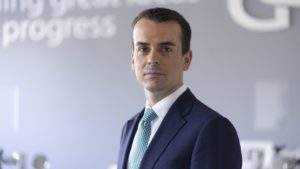UV Disinfection Equipment Market is Expected to Reach $2.8 Billion by 2020
According to a new report by Allied Market Research titled "UV Disinfection Equipment Market - Size, Industry Analysis, Trends, Growth, and Forecast, 2013-2020", the global UV disinfection equipment market has a potential to reach $2.8 billion by 2020, registering a CAGR of 15.3% during 2014-2020. The present progress witnessed in the market is due to the growing environmental concerns, toxicity of industrial water wastes, and the shrinking freshwater sources.
Wastewater treatment through UV disinfection equipment should garner almost 1/3rd of the global market by 2020. Presently, the water treatment application has the highest market share, as it is a volume-driven application. North America holds nearly 40% of the market as the technology is widely used in the region. However, chemical-based water disinfectants are still prevalent in the developing regions, especially among numerous municipal corporations. Acceptance of UV based technology in these regions would eventually add to the growth of the market in APAC and LAMEA.
UV disinfection is evolving as the latest technology in the water treatment industry. Replacement of chlorine-based disinfection with advanced disinfection techniques (UV and ozone being two major technologies) is the key trend boosting the adoption of UV technology. Low installation and operational cost, along with residue-less functioning, and ease of maintenance are the key propellants of UV disinfection market. Moreover, UV nearly doubles the operational efficiency (in terms of time required to disinfect water) in water treatment, compared to chlorine based disinfection techniques. The growth of the healthcare and chemical industry is creating tremendous opportunities for the UV disinfection equipment market. However, widespread use of chlorine based low-cost disinfection method is a major restraint for the market.
UV disinfection finds its uses in diversified areas, majorly in water treatment, wastewater treatment, air treatment, process-water treatment, and surface disinfection. Among these, water treatment leads the market, accounting to almost 60% of the total market share, as it is a volume-driven application (in terms of number of UV equipment utilized). Wastewater treatment indicates the maximum potential for growth during the forecasted period. Scarcity of freshwater is a major concern globally; therefore, there is a growing emphasis on the treatment and reuse of wastewater, which would boost the growth of this application.
The report also analyzes the application of water treatment in municipalities, residences, and commercial sectors. Currently, municipal water treatment segment holds more than 50% of the share in the water treatment application of UV equipment. Use of UV equipment in municipal water treatment has increased significantly, as it is considered to be an efficient and eco-friendly system that eliminates the use of chemicals. Therefore, several municipalities have started transforming their chemical-based disinfection plants to UV light-based plants. Residential water disinfection is the second largest revenue generating application followed by commercial applications.
Key findings of the study:
- Global market for UV disinfection equipment is gaining prominence due to its increasing applications in water disinfection
- Growing freshwater crisis has further led to a greater emphasis on the use of UV for waste water treatment
- Use of UV disinfection in water treatment contributes to more than half of the revenue of the global UV disinfection equipment market
- Based on the geographic analysis, North America is the highest revenue-generating region, followed by Europe with nearly the same market share
- In 2013, municipal water treatment held approximately 4/5th of the UV disinfection equipment application market in water treatment
- Waste water treatment is the fastest growing application area for UV disinfection equipment
The North American region has the highest market revenue due to early adoption of technology and favorable government initiatives. Developing nations of APAC and LAMEA would witness notable growth during the forecasted period due to the growing awareness of non-hazardous disinfection systems.
In November 2013, Calgon Carbon Corporation signed a 10-year contract (estimated to $2 million annually) with the city of Glendale, Arizona for reactivation of services with the use of carbon and UV to treat the city s drinking water. This trend may pave the way for market players to further explore the municipal sector.
Source: Allied Market Research


